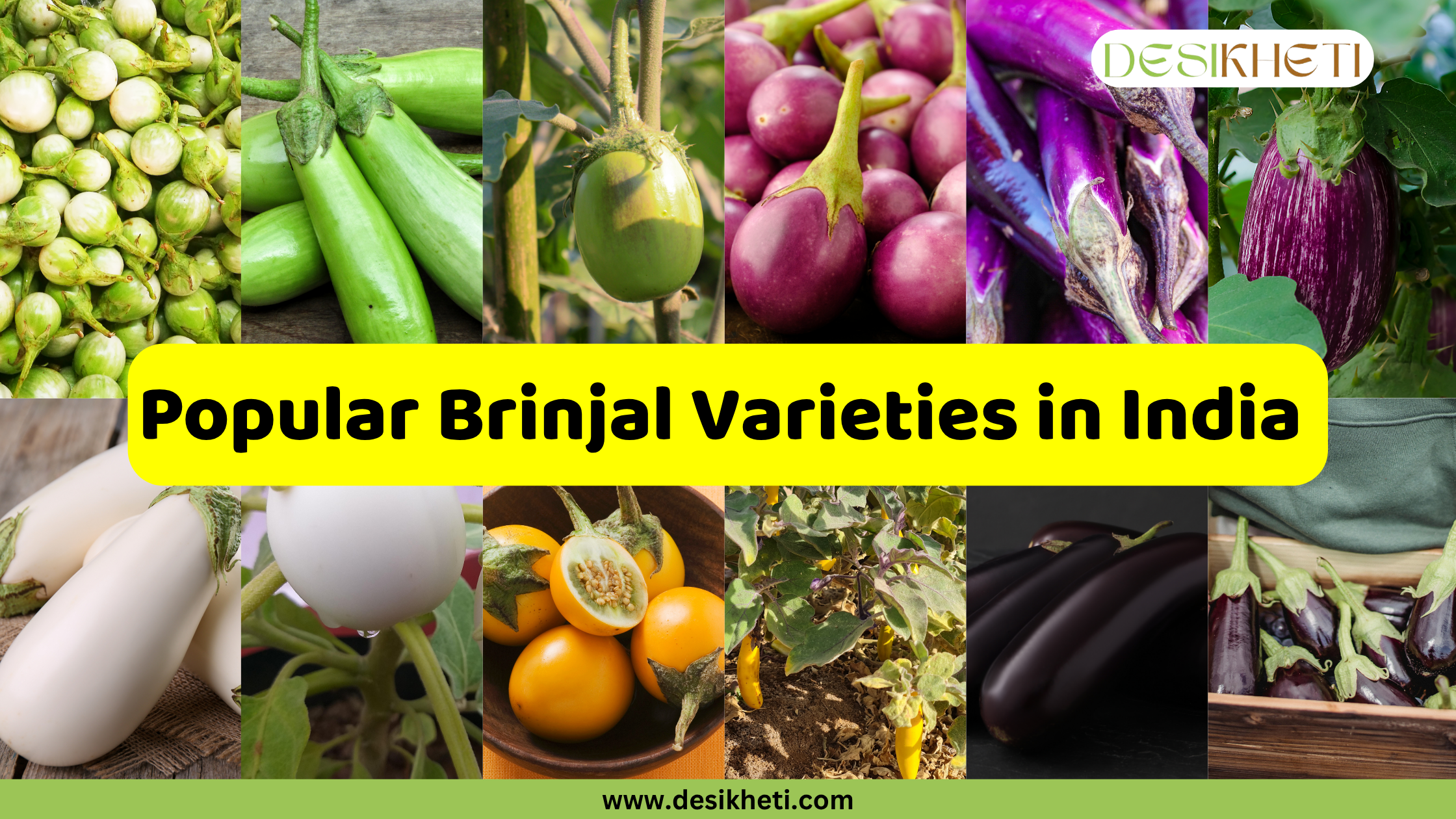Table of Contents
Introduction
Brinjal, also known as eggplant or aubergine, is a versatile and widely cultivated vegetable across India and many parts of the world. In India, brinjal is extensively grown in states like Andhra Pradesh, Maharashtra, West Bengal, Tamil Nadu, and Bihar, contributing significantly to rural livelihoods and local markets.
Brinjal comes in a variety of shapes, sizes, and colors. From glossy purple ovals to green and white varieties, brinjals are cherished for their diversity. This wide range allows farmers to cultivate varieties suited to different climates, soil types, and regional cuisines.
This blog explores some of the popular brinjal varieties, their distinct features, and their uses. So, without further delay, let’s dive into the blog.
Popular Brinjal Types in India
Green Round Brinjal
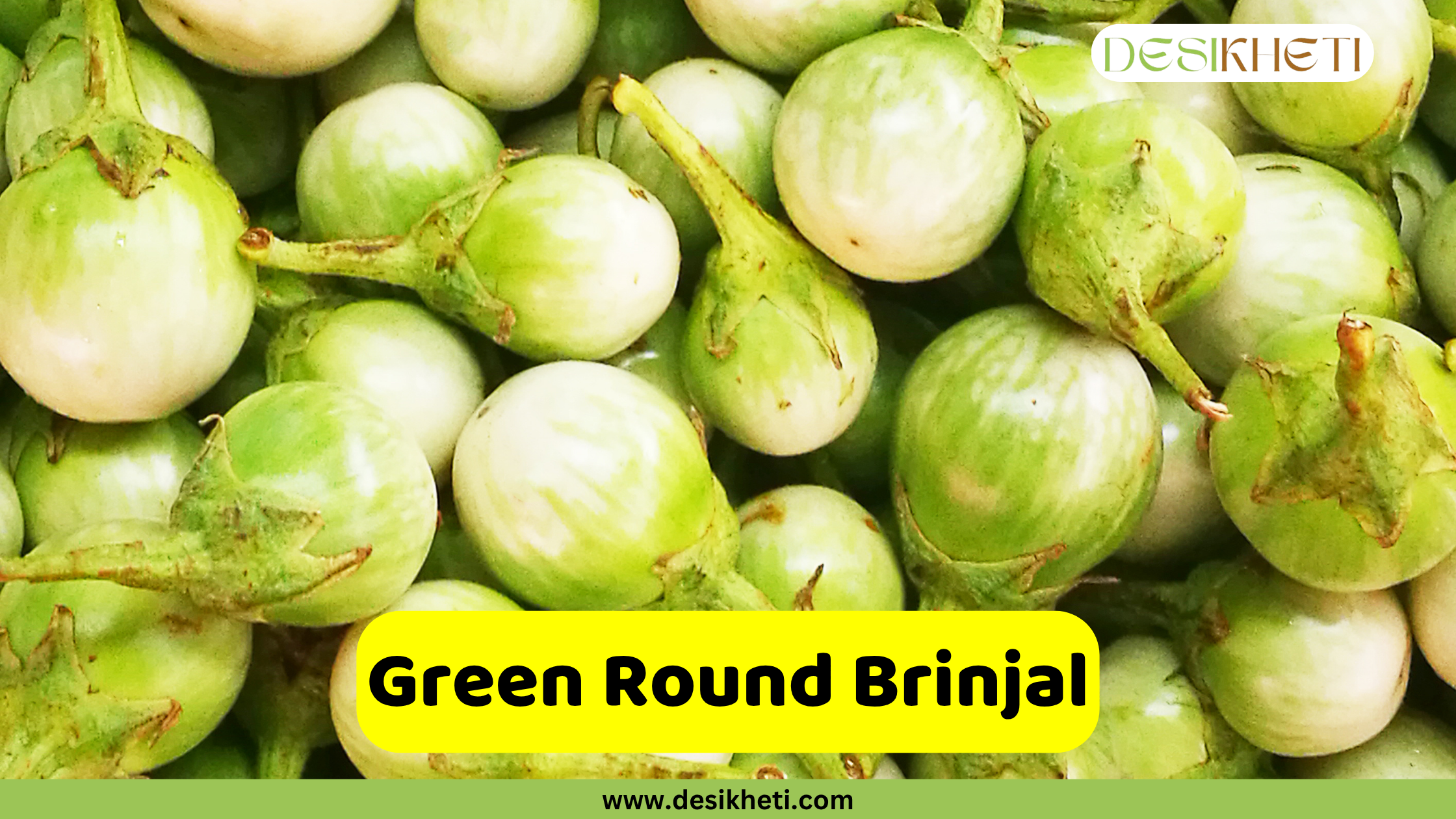
The Green Round Brinjal is a compact, round-shaped variety with smooth, glossy skin in shades ranging from light to dark green. It is smaller in size compared to other brinjal types and is known for its mild, less bitter flavor and tender texture.
This variety is ideal for a range of dishes, including curries, stuffed brinjal preparations, sambar, and lentil-based stews. It is also well-suited for stir-frying and grilling due to its quick-cooking nature.
Green Long Brinjal
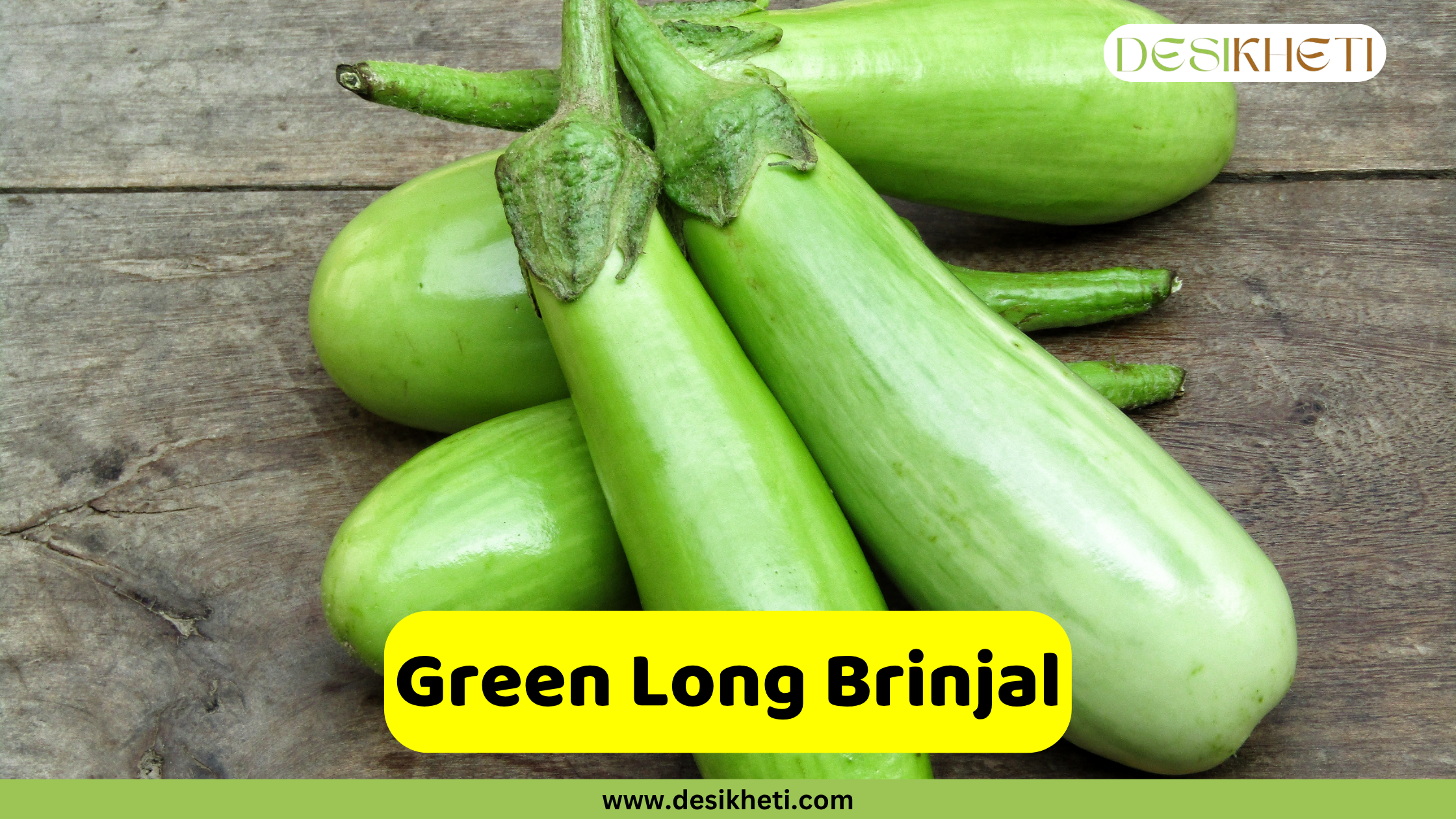
The Green Long Brinjal is an elongated, slender variety with smooth, glossy skin that ranges from pale to dark green. It is easily distinguishable from round types due to its cylindrical shape. Known for its mild flavor and tender flesh, it is less bitter than the purple varieties.
This variety is commonly used in curries, stews, and sauces. Its long shape and firm texture make it ideal for stuffed brinjal dishes, often filled with spices, herbs, and occasionally nuts.
Green Thorn Brinjal

The Green Thorn Brinjal is an oblong-shaped, robust variety with smooth green skin ranging from light to dark shades. Slightly larger than other green types, it is known for its mild flavor and firm, tender flesh.
This brinjal is well-suited for curries, stuffed dishes, and sauces. Its firm texture and ability to absorb spices make it a favorite in both North and South Indian cuisines.
Purple Round Brinjal
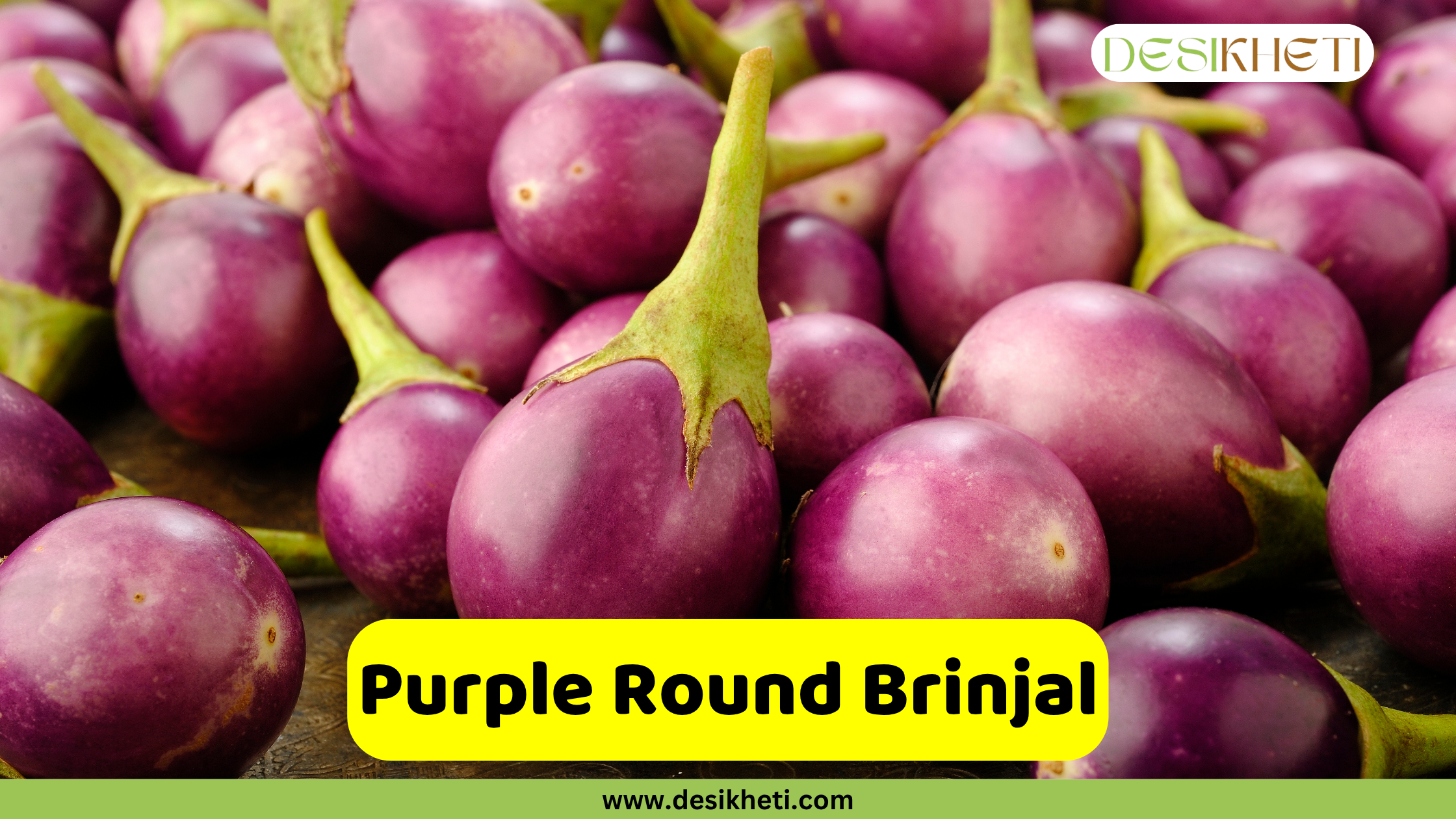
The Purple Round Brinjal is a plump, round variety with smooth, glossy skin that ranges from deep violet to light lavender. It has tender white flesh with few seeds and is widely recognized for its attractive appearance and mild taste.
This variety is commonly used in Bharwa Baingan (stuffed brinjal) and adds rich flavor to sambar and rasam. Its ability to absorb spices makes it ideal for a wide range of Indian curries and traditional preparations.
Purple Long Brinjal
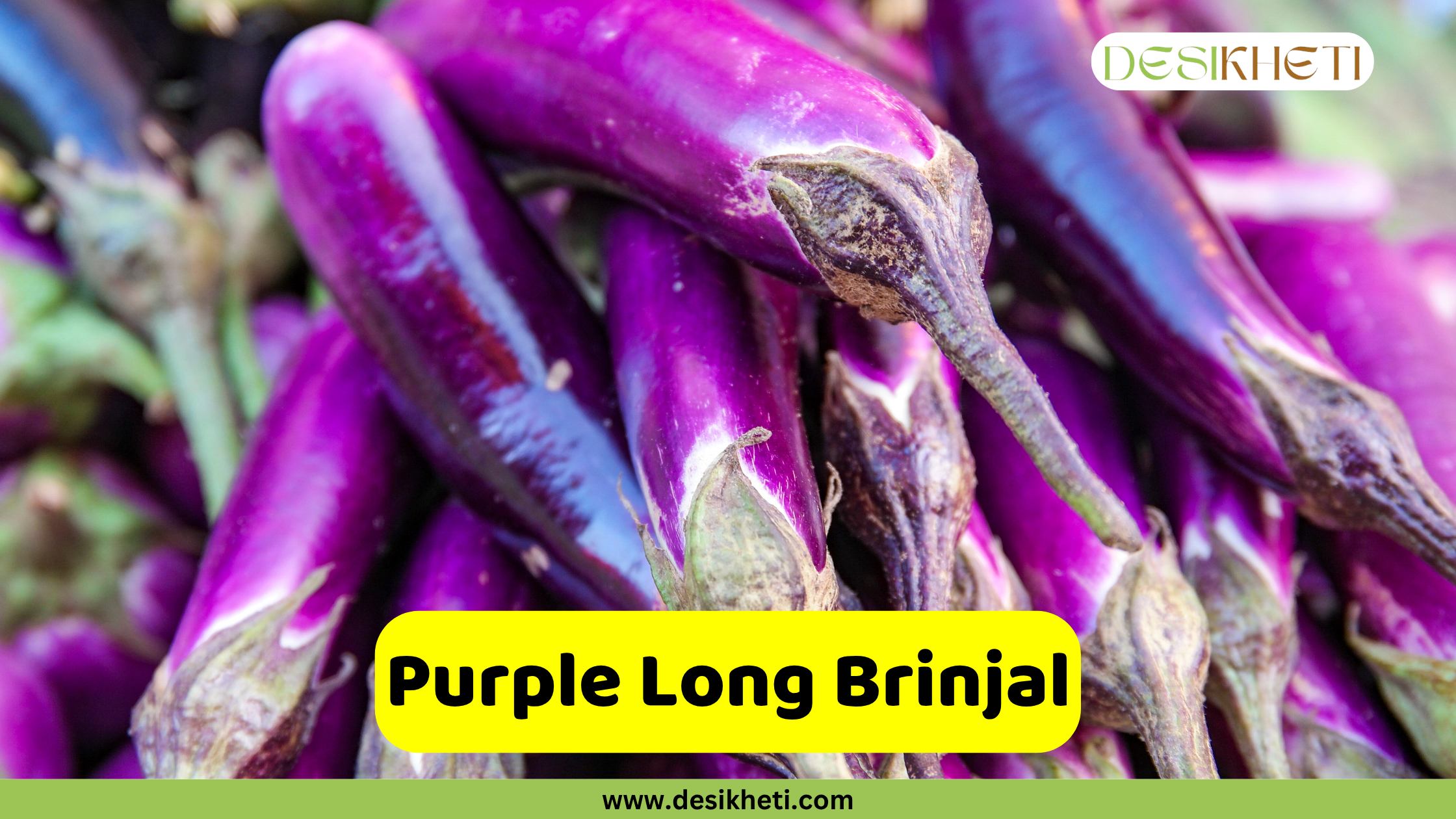
The Purple Long Brinjal is distinguished by its elongated, slender shape and glossy deep purple skin. It typically grows longer than round varieties and has a smooth texture with tender, pale flesh. Its mild flavor and appealing appearance make it a favorite in many regions of India.
This brinjal is suitable for curries and stir-fries. Its shape also makes it ideal for slicing and grilling, and it absorbs spices well during cooking.
Purple Thorn Brinjal
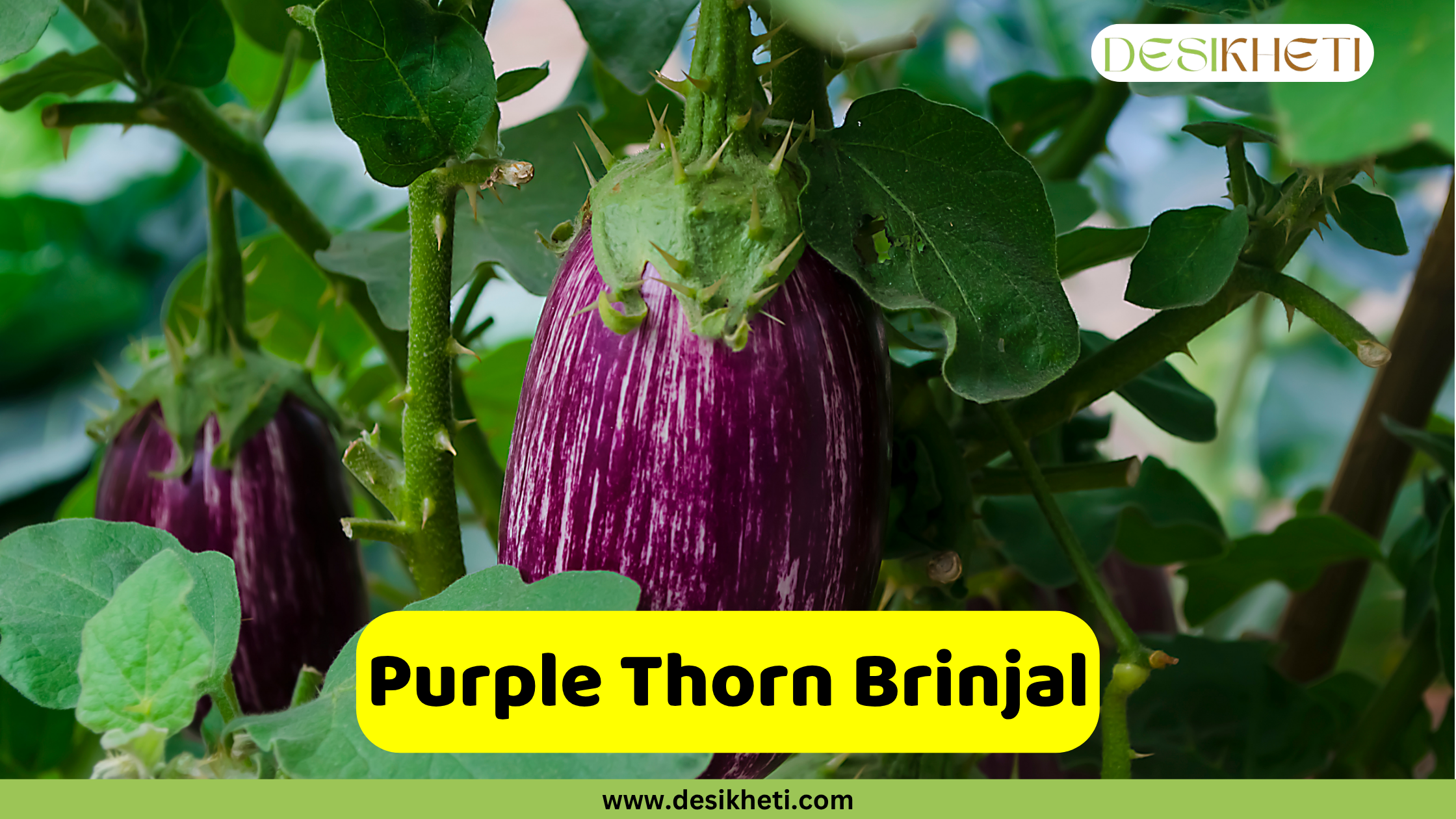
The Purple Thorn Brinjal is known for its medium to large size, rounded or slightly oval shape, and the presence of sharp Thorns on the calyx. Its glossy purple skin and firm texture make it stand out among other varieties.
This variety is ideal for stuffed baingan recipes, where it retains its shape while absorbing rich spices. It is also commonly roasted whole for Baingan Bharta, lending a smoky depth to the dish.
White Long Brinjal
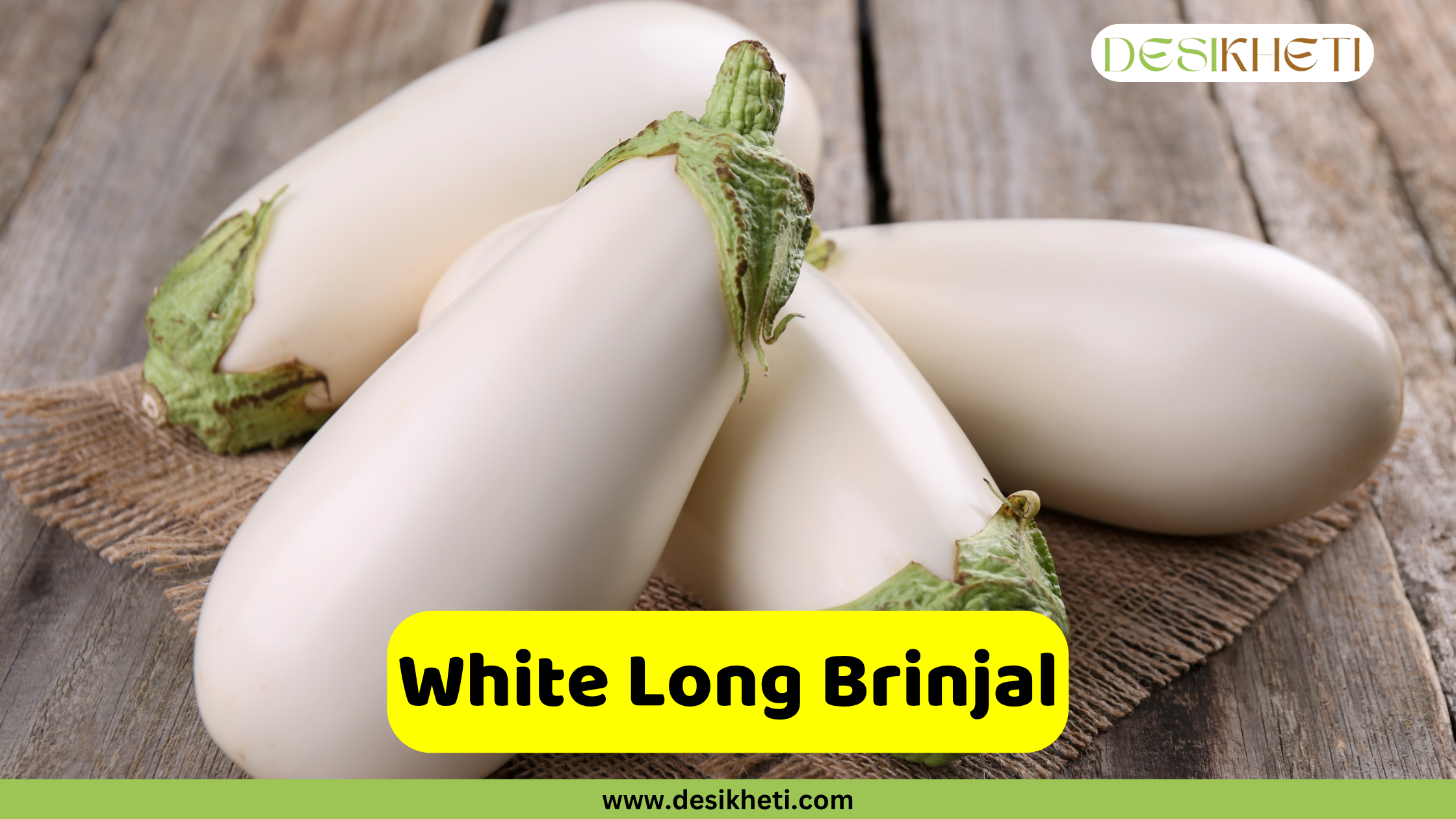
The White Long Brinjal is an eye-catching variety with a slender, elongated shape and creamy white skin. Its smooth, cylindrical body tapers slightly at the ends, and the inner flesh is soft and ranges from white to off-white, with a mild taste.
This variety is ideal for stuffed dishes, especially when filled with spiced masala and pan-fried. It is also used in brinjal curry and blends well in sambar and dal-based stews, where it retains its shape and absorbs surrounding flavors.
White Round Brinjal
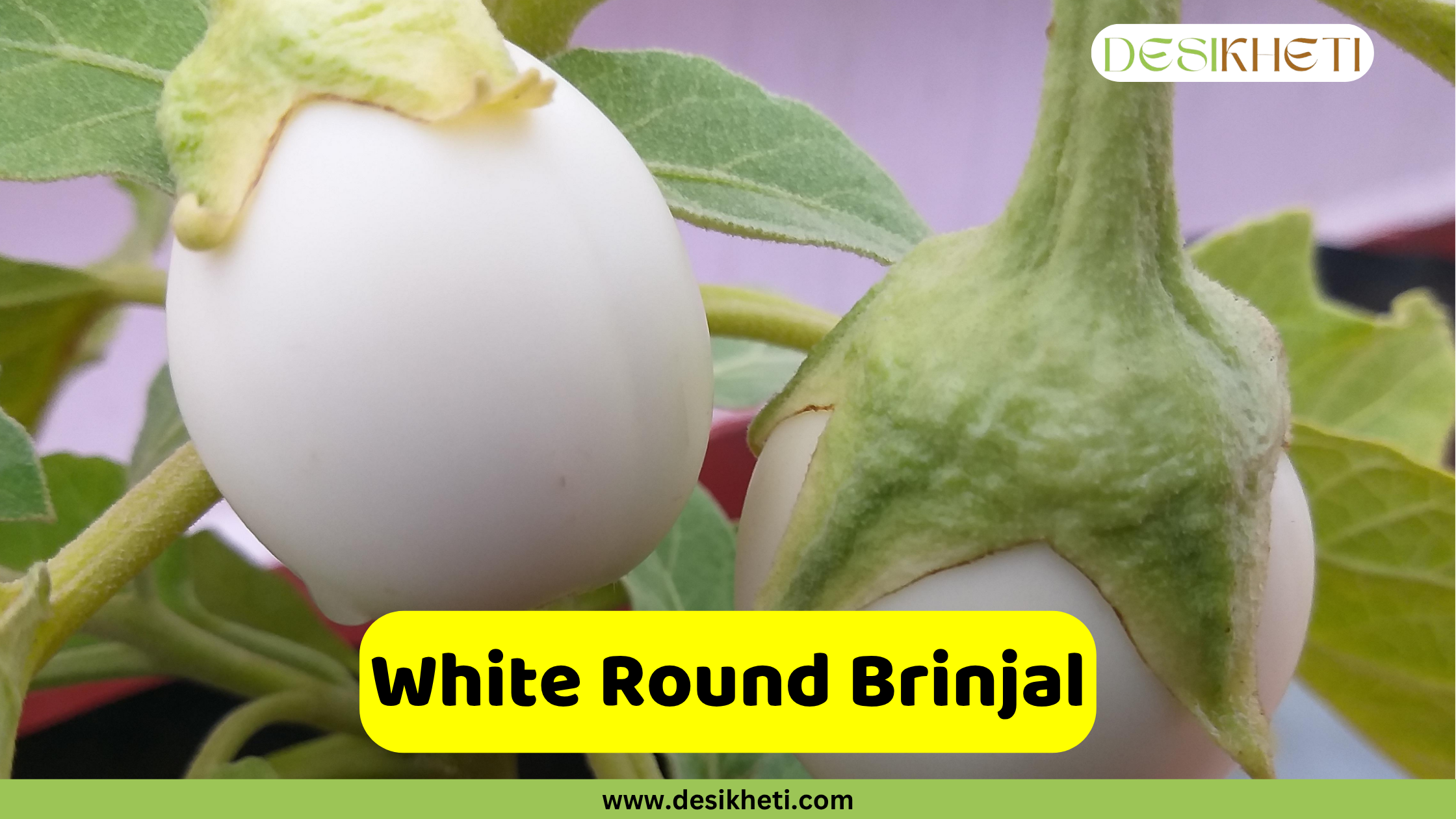
The White Round Brinjal is a medium-sized, round variety with creamy white, shiny skin and pale, tender flesh. It is mildly sweet in flavor and generally less bitter than purple varieties, making it a preferred choice in many Indian kitchens.
This variety is excellent for stuffed brinjal dishes, especially in North Indian cuisine. It is also used in curries, where it is cooked with onions, tomatoes, and spices, absorbing flavors beautifully due to its soft texture.
Yellow Round Brinjal
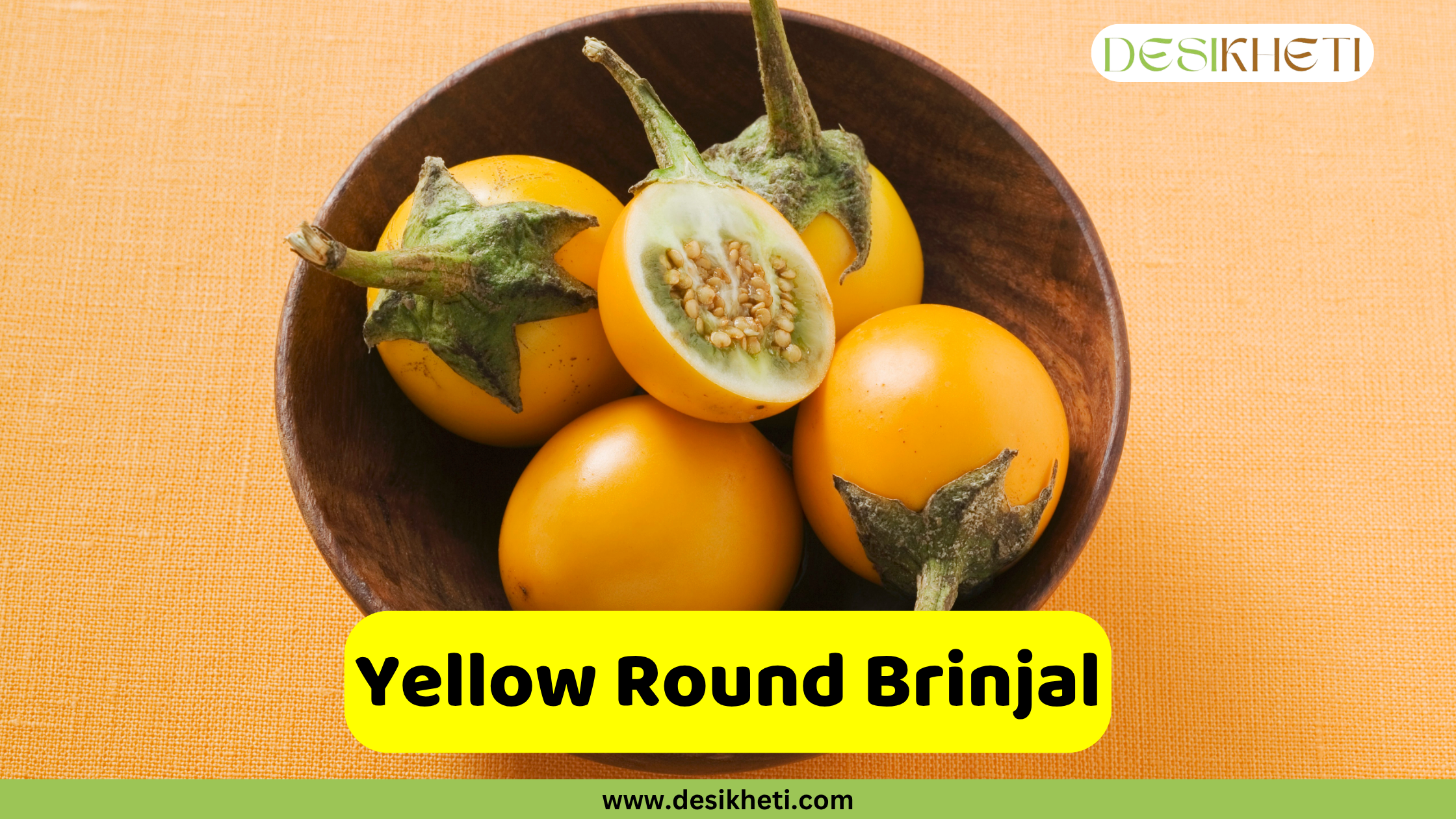
The Yellow Round Brinjal is a small to medium-sized variety known for its round shape and glossy yellow skin, which ranges from pale to golden yellow. It has firm, dense flesh and a mild flavor, making it a standout among brinjal types.
This variety is well-suited for stuffed dishes filled with spices, herbs, and sometimes peanuts or sesame seeds. It is also commonly used in vegetable curries, where it complements ingredients like potatoes, tomatoes, and peas.
Yellow Long Brinjal
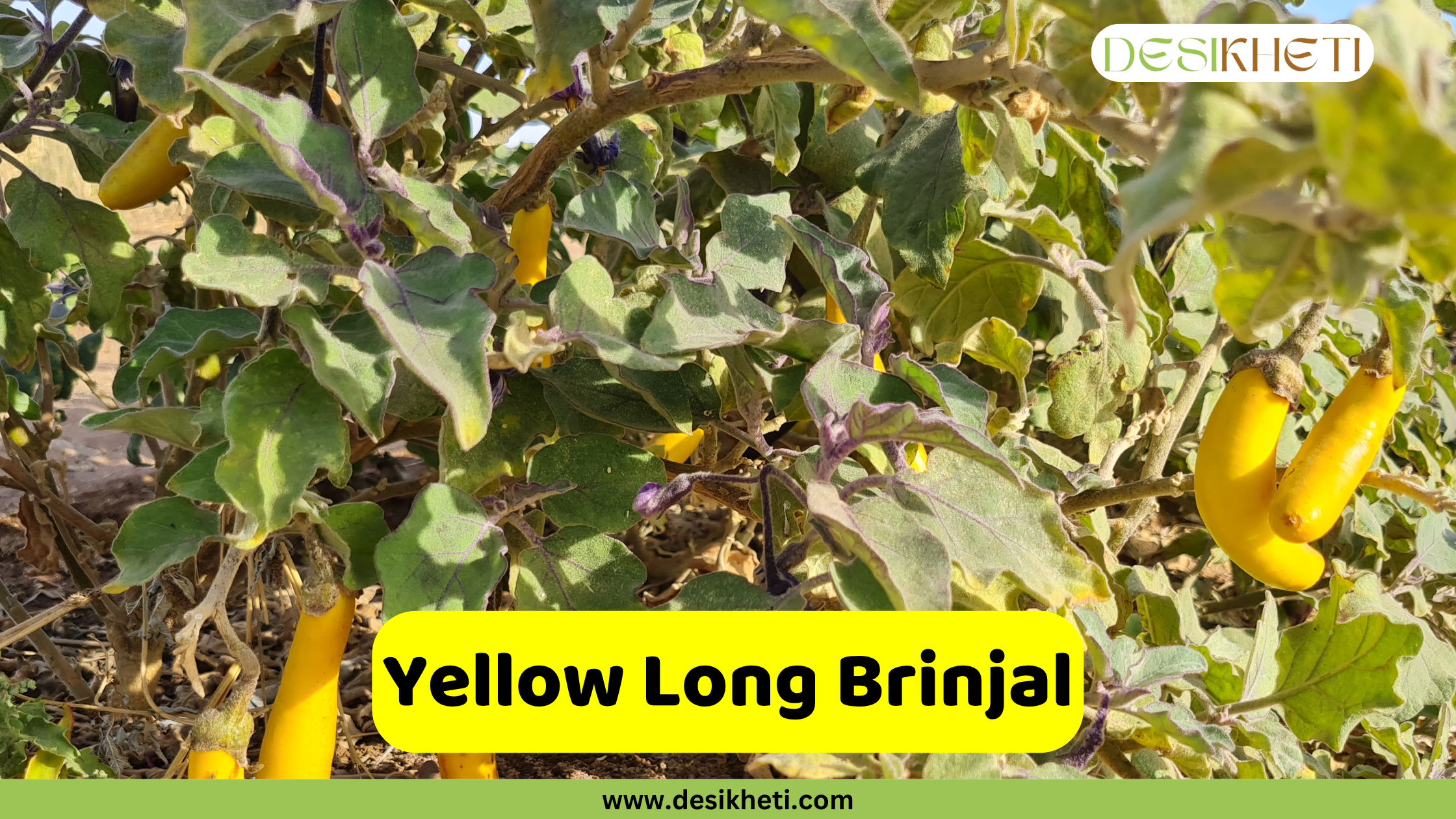
The Yellow Long Brinjal is a distinctive variety known for its elongated, slender shape and vibrant yellow, smooth, glossy skin. It has a mild, slightly sweet flavor with a tender texture and minimal bitterness.
This brinjal is commonly used in stuffed dishes, filled with spiced mixtures of herbs and occasionally nuts. It is also popular in curries, where its tender flesh absorbs spices well and pairs nicely with other vegetables.
Black Long Brinjal
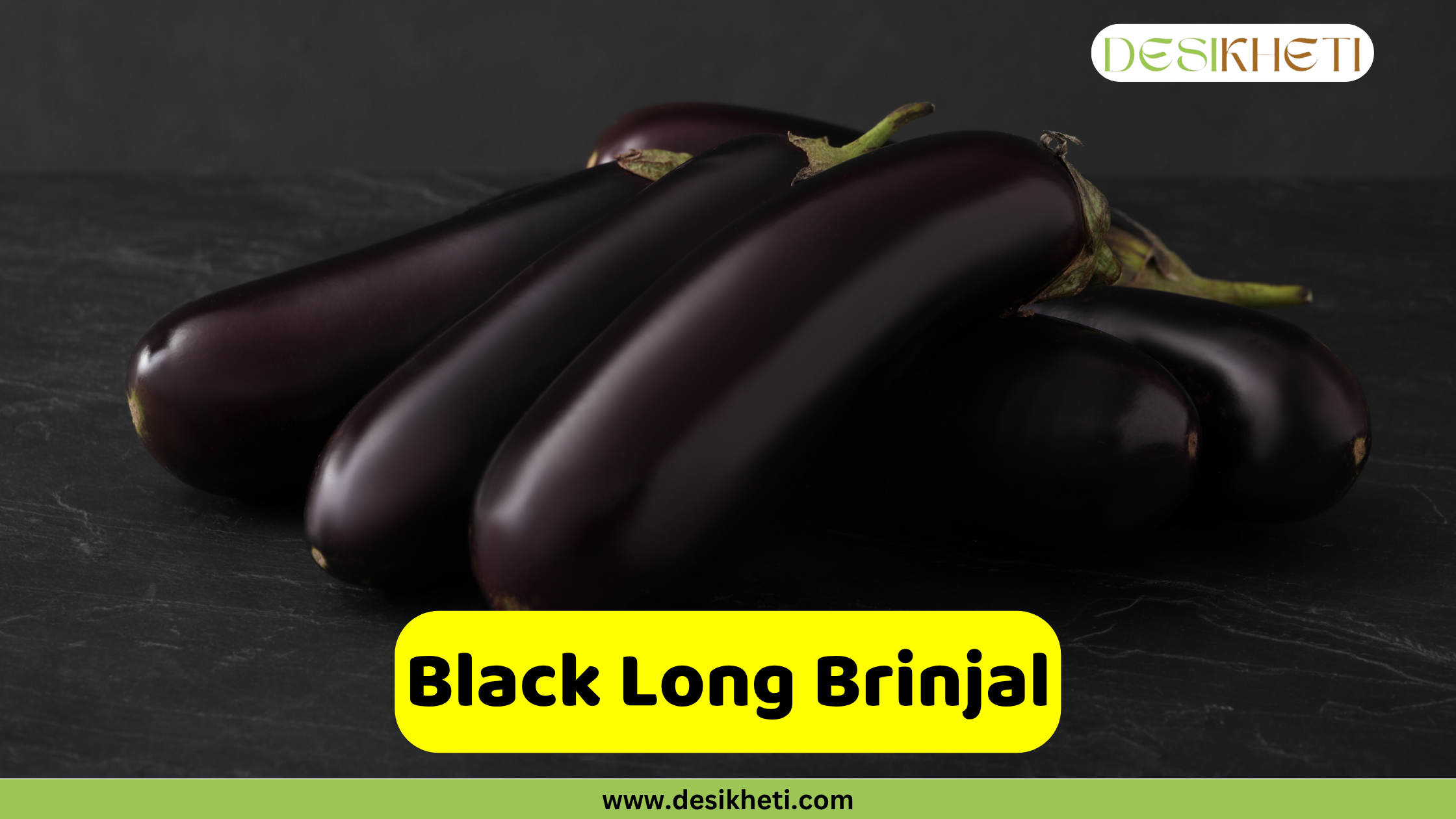
The Black Long Brinjal is a distinctive variety known for its long, slender shape and deep, dark purple to black smooth, glossy skin. Its flesh is creamy and soft when cooked, with a mild flavor that is less bitter than many other brinjal types.
This brinjal is ideal for grilling, roasting, or frying and is often served as a side dish or in mixed vegetable preparations. It is commonly used in sambar and dal, especially in South Indian cuisine, where it is added to lentil stews. Its soft texture and mild taste make it popular in both traditional and modern Indian dishes.
Black Round Brinjal
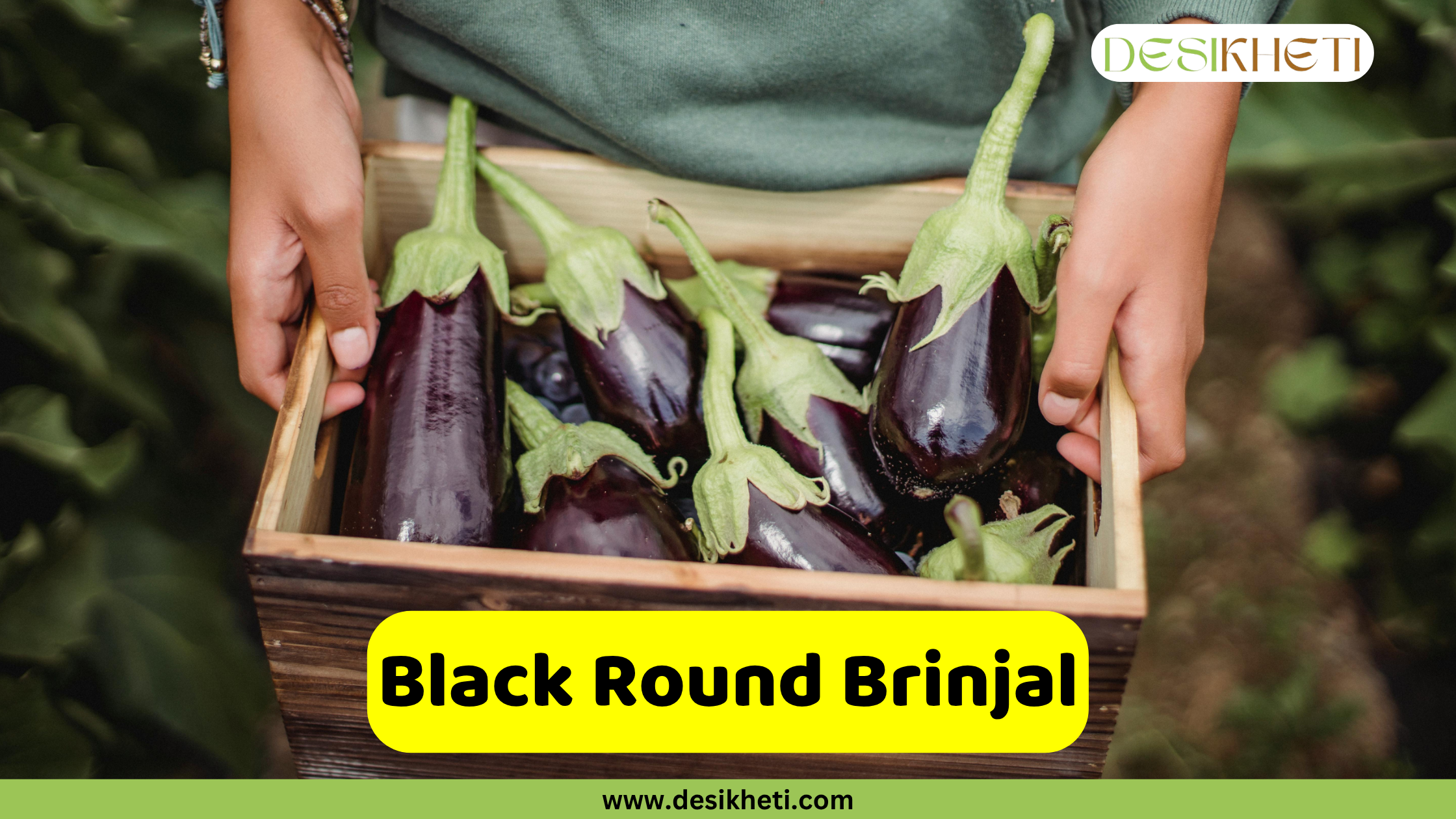
The Black Round Brinjal, also known as Kaala Baingan, is distinguished by its deep, dark purple to black glossy skin and round, smooth shape. It is medium to large in size, with a firm exterior and creamy, tender flesh when cooked. This variety has a mild flavor and low seed content, making it less bitter and highly versatile in cooking.
Black Round Brinjal is commonly used in curries, where it absorbs spices and enhances the dish’s flavor. Its smooth texture makes it ideal for stuffed brinjal recipes filled with spices, herbs, and nuts. It is suitable for both dry and gravy-based dishes and is also excellent for grilling, roasting, or frying as a side dish or part of mixed vegetable preparations.
Other Popular Brinjal Varieties
- Japanese Brinjal
- Indian Round Brinjal
- Cherry Brinjal (Baby Brinjal)
- Striped Brinjal
- Thai Brinjal
- Ribbed Brinjal
Growing Tips and Care for Brinjal (Eggplant)
Growing healthy and productive brinjal plants requires careful attention to soil, climate, pest management, and maintenance practices. Whether you’re a home gardener or a commercial farmer, these tips can help ensure a successful brinjal crop.
- Climate and Temperature: Brinjal thrives in warm climates with temperatures between 21°C and 35°C. It is sensitive to frost, so avoid planting during cold spells. In regions with mild winters, it can be grown almost year-round.
- Soil Requirements: Choose well-drained, loamy or sandy-loam soil enriched with organic matter. The ideal soil pH should range between 5.5 and 7.0. Avoid waterlogged areas, as brinjal roots are prone to rot.
- Seed Sowing and Transplanting: Start seeds in a nursery or seed tray. Transplant healthy seedlings after 25–30 days, maintaining a spacing of 45–60 cm between plants and 60–75 cm between rows to ensure proper air circulation.
- Sunlight: Brinjal requires 6 to 8 hours of direct sunlight daily. Ensure the plants are positioned in a sunny spot to encourage healthy growth and flowering.
- Watering: Maintain consistent moisture, especially during flowering and fruiting. Avoid overwatering, as it can lead to fungal infections. Drip irrigation or controlled watering at the base is ideal.
- Fertilization: Incorporate compost or well-rotted farmyard manure before transplanting. Apply a balanced fertilizer at regular intervals, and top-dress with potassium and phosphorus during fruiting.
- Pest and Disease Management: Common pests include fruit and shoot borers, aphids, and whiteflies. Practice crop rotation, use neem-based sprays, and promptly remove infected plant parts. Fungal diseases like powdery mildew and bacterial wilt can be controlled with proper spacing, well-drained soil, and organic fungicides.
- Pruning and Support: Regularly remove old or diseased leaves to improve air flow. Tall or heavily fruiting varieties may need staking or support to prevent bending or breakage.
- Harvesting: Harvest brinjals when they are firm, glossy, and fully grown, but before they begin to lose shine or harden. Frequent harvesting encourages more fruit production.
Brinjal is much more than just a vegetable; it is an essential part of India’s rich culinary and agricultural heritage. Each variety brings its own texture, flavor, and color to the plate, enhancing the diversity of Indian cuisine.
Which brinjal variety do you prefer growing or cooking with? And what’s your favorite recipe using that variety?
👇 Mention it in the comments below.
FAQs on Brinjals
1. What is the scientific name of brinjal?
A. The scientific name of brinjal or eggplant is Solanum melongena.
2. Which states in India are major producers of brinjal?
A.
- West Bengal
- Odisha
- Gujarat
- Madhya Pradesh
- Bihar
- Chhattisgarh
- Uttar Pradesh
- Assam
- Maharashtra
- Tamil Nadu
3. How can I reduce bitterness in brinjal dishes?
A. To reduce bitterness, soak brinjal pieces in salted water before cooking. Also, choose less mature, tender brinjals, which tend to be naturally less bitter.
4. What is the average growing period of brinjal plants?
A. Brinjal plants typically take about 90 to 120 days from sowing to harvest, depending on the variety and growing conditions.
5. Can brinjal be grown year-round in India?
A. Brinjal can be cultivated throughout the year in many parts of India, especially in regions with mild winters and warm climates.
6. What are some common pests and diseases affecting brinjal crops?
A. Common pests include the shoot and fruit borer, aphids, and whiteflies. Diseases such as bacterial wilt, leaf spot, and powdery mildew can also affect brinjal plants.
7. Is brinjal nutritious?
A. Brinjal is low in calories and rich in dietary fiber, antioxidants, and essential nutrients like potassium, vitamin B6, and folate.
